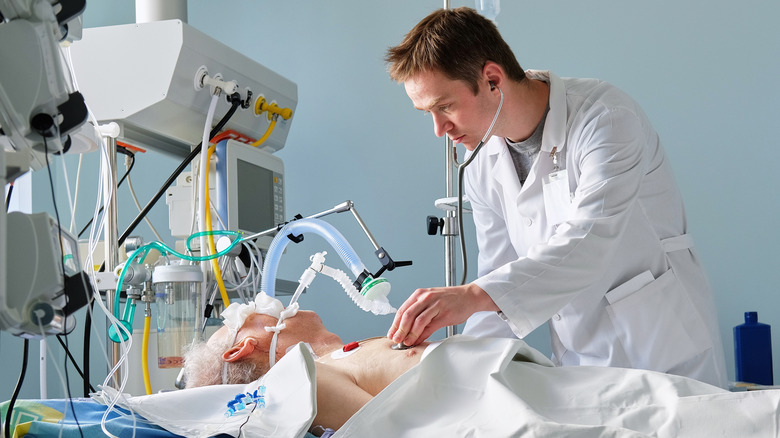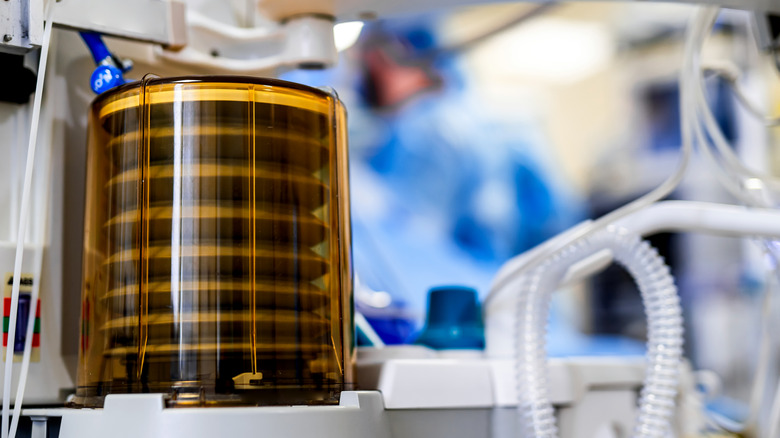What's The Difference Between Being Intubated Vs. On A Ventilator
Maybe it's from "Grey's Anatomy" or maybe it's from news coverage of Covid-19, but you've probably heard of people being intubated and people being on a ventilator. But you might not be 100% sure what the terms actually mean. Getting intubated and being on a ventilator are both medical procedures that are linked, but they aren't the same thing. Here's the difference.
Intubation is, broadly speaking, inserting a plastic tube into the body, generally through the mouth. It can be done to address a number of medical issues — for example nasogastric intubation is a plastic tube from your mouth into your stomach that can be used to take samples, deliver food and medicine, or remove substances (from Merck Manuals).
When you hear about it in the context of Covid-19, however, the intubation in question is tracheal intubation. For this procedure, the plastic tube is entered into your mouth and into your trachea, aka windpipe. You only get intubated if you can't breathe on your own and are unable to provide your body with enough oxygen (from VeryWell Health). The tube inserted via intubation is the first thing that happens before ventilation.
A ventilator works as a set of external lungs
After intubation, the tube is hooked up to a mechanical ventilator that breathes for you. A ventilator is able to clear carbon dioxide from the lungs and deliver high concentrations of oxygen, according to the American Thoracic Society. It reduces the energy that your body needs to use to breathe, in hopes of allowing time to rest and heal. Ventilators may be used during surgery as well as for life support, when you may be lightly or heavily sedated, depending upon the situation (from Northern Idaho Advanced Care Hospital).
"Usual breathing uses negative pressure, meaning you open your mouth and air flows in," Registered Respiratory Therapist Jerry King told University of Alabama at Birmingham (UAB) News. "The machine uses positive pressure to force air into your lungs. Think of standing in front of a leaf blower." When on a ventilator, the intubation tube is still in your throat, so you're unable to speak or swallow (via UAB News).
Being on a ventilator can help, but there are risks involved. "It's not natural to have positive pressure forcing air into your lungs," Dr. Ferrante of Yale Medicine explained. There is a possibility of infection, and potential decline in cognitive function and mental health after coming off a ventilator.
Coming off a ventilator — "weaning" — is a gradual process to determine if a patient can breathe on their own. When the ventilator is no longer needed, the tube is removed from the patient's throat, a procedure termed extubation (from American Association for Respiratory Care).

